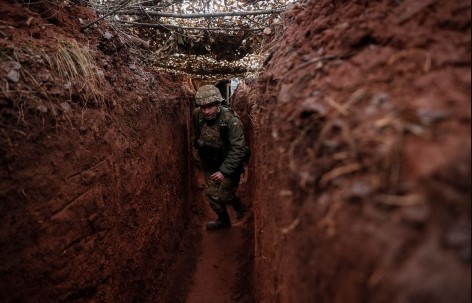×
The Standard e-Paper
Smart Minds Choose Us

A Ukrainian service member walks along a trench at a position on the front line near the city of Novoluhanske in the Donetsk region, Ukraine. [Reuters]
Ukraine's armed forces are heavily outnumbered and outgunned by Russia's, but as Russia begins what may be a large-scale invasion, military experts say they would be capable of mounting significant resistance and inflicting heavy casualties.